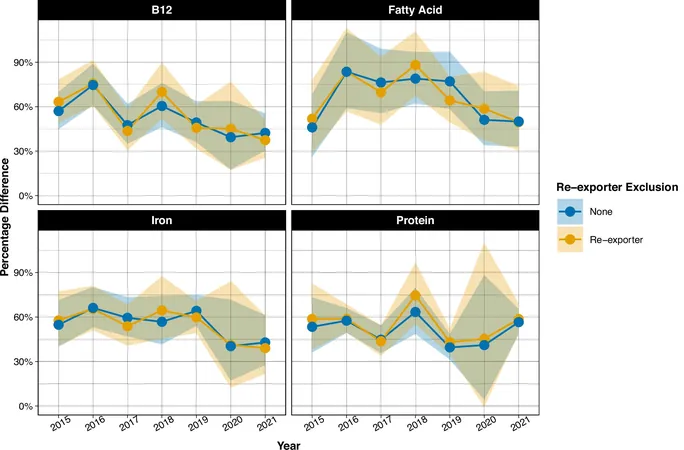
Seafood Imports: A Hidden Nutritional Gem for Developing Nations
2025-07-01
Author: Ming
Revealing the Nutrition Advantage of Seafood for Developing Countries
A groundbreaking analysis has revealed that developing countries enjoy a significant nutritional bargain when it comes to seafood imports, getting more nutrients per dollar than their wealthier counterparts. This surprising finding, published in Nature Communications, highlights how disruptions in global seafood trade could threaten dietary security for millions reliant on these imports.
Martin Smith, a prominent environmental economist at Duke University, led the study, stating, "No matter how we did our analysis, developing countries consistently get more nutrition for their money when importing seafood. They gain more protein, fatty acids, iron, and vitamin B12 per dollar spent." The reason for this advantage lies in their lower spending on non-nutritional attributes that developed nations prioritize.
The Crucial Role of Seafood in Global Diets
Seafood is the world’s most traded food commodity, essential for the dietary needs of over one-third of the global population, who rely on it for at least 20% of their animal protein intake. Beyond protein, fish and shellfish are rich sources of vital micronutrients, including heart-healthy fatty acids, vitamin B12, and calcium.
In developed countries, micronutrient deficiencies are often overlooked, thanks to food fortification and rich diets. However, many developing nations grapple with significant micronutrient deficiencies, highlighting the importance of affordable seafood.
Debunking the Myth of Nutritional Sacrifice
Curiously, the researchers investigated whether developing nations were sacrificing nutrition for cheaper seafood. By linking extensive trade and nutritional databases, they analyzed seafood products traded worldwide between 2015 and 2021.
The findings were clear: developing countries, often low- and middle-income nations, consistently pay less for nutrient-rich seafood than developed nations. For instance, while both fresh and frozen salmon provide similar protein content, the lower cost of frozen options means that developing countries extract greater nutritional value per dollar.
The Freshness Premium: A Wealth Disparity
This astonishing nutritional advantage paints a vivid picture of the global seafood market. High-income countries such as the U.S., Japan, and those in the EU pay a premium for fresh seafood, which is not necessarily more nutritious. This preference opens opportunities for developing nations to import frozen seafood at lower costs, preserving their nutritional intake.
Smith expressed relief at these findings, stating, "Our initial worry was that lower dollar value indicated lower nutritional quality. It's reassuring to know that's not true. However, any disruption to seafood trade could jeopardize nutrition for many developing countries."
Conclusions for Global Health
As the world grapples with food security challenges, the research underscores the need to maintain uninterrupted seafood trade, especially for developing nations. It reinforces the notion that, for them, seafood imports don't just feed hunger; they provide essential nutrients vital for health, making seafood a true nutritional treasure.




 Brasil (PT)
Brasil (PT)
 Canada (EN)
Canada (EN)
 Chile (ES)
Chile (ES)
 Česko (CS)
Česko (CS)
 대한민국 (KO)
대한민국 (KO)
 España (ES)
España (ES)
 France (FR)
France (FR)
 Hong Kong (EN)
Hong Kong (EN)
 Italia (IT)
Italia (IT)
 日本 (JA)
日本 (JA)
 Magyarország (HU)
Magyarország (HU)
 Norge (NO)
Norge (NO)
 Polska (PL)
Polska (PL)
 Schweiz (DE)
Schweiz (DE)
 Singapore (EN)
Singapore (EN)
 Sverige (SV)
Sverige (SV)
 Suomi (FI)
Suomi (FI)
 Türkiye (TR)
Türkiye (TR)
 الإمارات العربية المتحدة (AR)
الإمارات العربية المتحدة (AR)